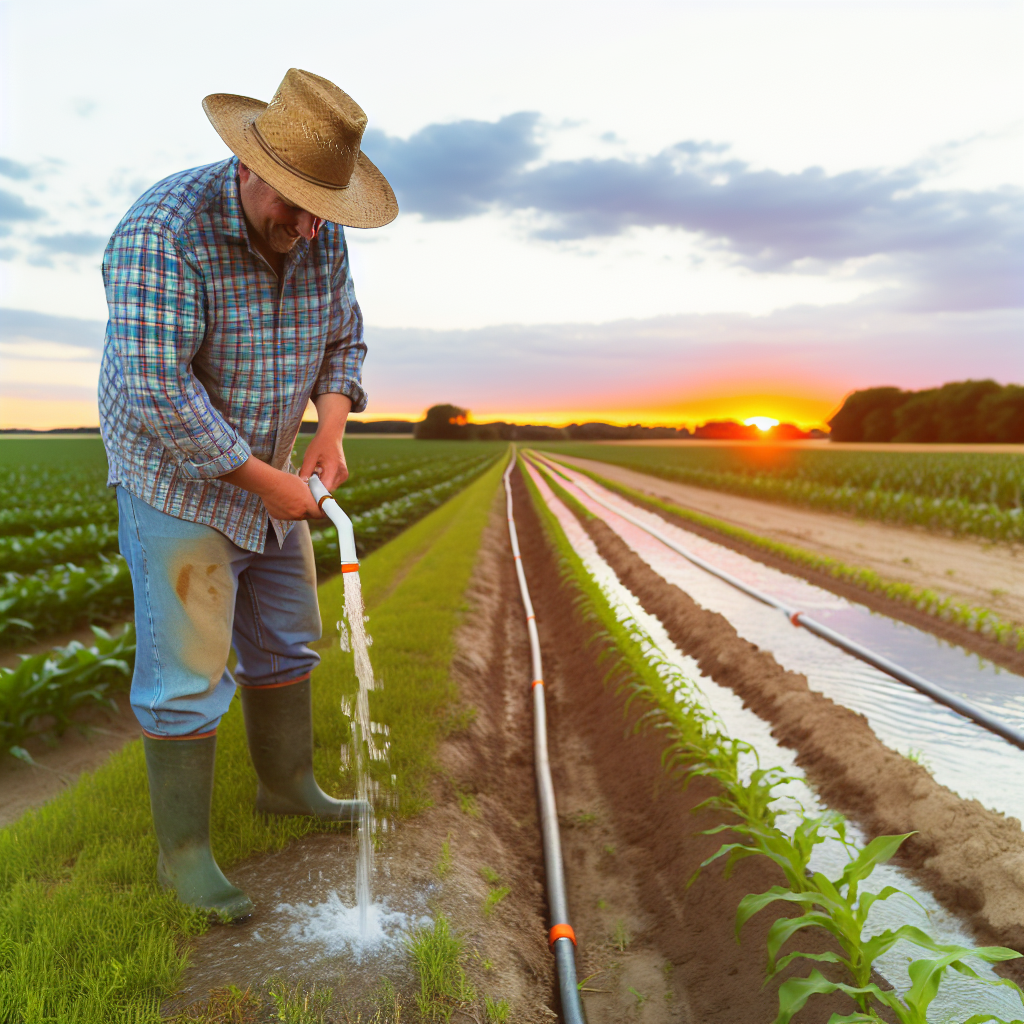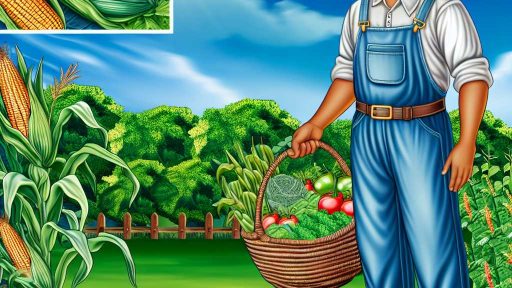Understanding the Importance of Water Conservation in Farming
Essential Resource for Agriculture
Water is a vital resource for all forms of agriculture.
It sustains crops and livestock, ensuring a productive farm.
Farmers need to recognize that its scarcity can limit their outputs.
Maximizing Agricultural Sustainability
Effective water conservation practices contribute to sustainability.
They help reduce dependency on external water sources.
This approach ensures that farming operations remain viable over time.
Environmental Benefits of Water Conservation
Conserving water protects local ecosystems and habitats.
It helps in maintaining natural water cycles.
Additionally, it reduces soil erosion and runoff problems.
Economic Advantages for Farmers
Water conservation can significantly lower operational costs.
Farmers save money on water bills and irrigation investments.
Less water waste translates to higher crop yields over time.
Community and Social Impact
Water conservation fosters a sense of community responsibility.
Farmers can inspire neighboring farms to adopt similar practices.
This collaboration benefits the entire agricultural sector.
Transform Your Agribusiness
Unlock your farm's potential with expert advice tailored to your needs. Get actionable steps that drive real results.
Get StartedAssessing Current Water Usage
Importance of Water Assessment
Assessing water usage is critical for small farm success.
It helps identify areas for improvement.
Moreover, it supports better resource allocation.
Tools for Water Assessment
Several tools can assist in assessing water usage.
Soil moisture sensors provide real-time data.
Water flow meters help track usage rates effectively.
Rain gauges collect data on precipitation accurately.
Utilizing these tools improves decision-making.
Techniques for Monitoring Water Usage
Implementing effective techniques enhances monitoring efforts.
Conduct regular audits of water resources on your farm.
Keep detailed records of water usage patterns.
Analyze historical data to identify trends.
Install drip irrigation systems to reduce water waste.
Engaging with Local Resources
Connecting with local agricultural extensions is beneficial.
They provide insights and best practices for water conservation.
Participating in community workshops enhances knowledge sharing.
Furthermore, local partnerships can offer networking opportunities.
Implementing Rainwater Harvesting Systems for Irrigation
Understanding Rainwater Harvesting
Rainwater harvesting collects and stores rainwater for later use.
This technique provides a sustainable water source for irrigation.
Additionally, it reduces reliance on groundwater and municipal water supply.
Choosing a Rainwater Harvesting System
Select a system that fits your farm’s size and needs.
You can choose between above-ground and below-ground storage options.
Above-ground tanks are easier to install and maintain.
Conversely, below-ground systems save space and blend with the landscape.
Showcase Your Farming Business
Publish your professional farming services profile on our blog for a one-time fee of $200 and reach a dedicated audience of farmers and agribusiness owners.
Publish Your ProfileDesigning Your Collection System
Design an effective roof catchment system for optimal collection.
Make sure your gutters direct water to the storage tank efficiently.
Install filters to keep debris out before water enters the tank.
Include a first-flush diverter to improve water quality.
Calculating Storage Needs
Calculate your water needs based on crop types and quantities.
Estimate annual rainfall to determine your storage capacity.
A general rule is to have at least a 1,000-gallon tank per acre.
Adjust storage sizes based on your specific conditions.
Maintaining the Harvesting System
Regular maintenance ensures the system functions efficiently.
Inspect gutters and filters monthly to prevent blockages.
Clean your storage tank annually to avoid contamination.
Monitor water quality regularly to ensure safety for irrigation.
Utilizing Harvested Rainwater for Irrigation
Implement a drip irrigation system to maximize water efficiency.
Drip irrigation delivers water directly to plant roots.
This approach minimizes evaporation and runoff.
Adjust your irrigation schedule according to weather conditions.
Exploring Additional Benefits
Harvesting rainwater can lower your water bills significantly.
Using this water contributes to sustainable farming practices.
Moreover, it reduces the risk of surface runoff and erosion.
Lastly, it enhances your farm’s resilience to drought conditions.
Find Out More: Local Food Sourcing Benefits for Community Farms
Utilizing Drip Irrigation to Maximize Efficiency
Understanding Drip Irrigation
Drip irrigation delivers water directly to plant roots.
This method reduces water waste significantly.
It ensures plants receive consistent moisture levels.
Consequently, it promotes healthier crop growth.
Benefits of Drip Irrigation
Drip irrigation minimizes evaporation losses.
It allows for targeted watering based on plant needs.
Furthermore, it can reduce pest and weed issues.
- Higher efficiency in water usage
- Better yield and quality of crops
- Lower labor costs for watering
Implementing Drip Irrigation
Start by assessing your field’s layout and soil type.
Next, choose the right components for your system.
These include mainlines, emitters, and filters.
Afterward, plan the emitter spacing according to crop requirements.
Finally, monitor and adjust the system for optimal performance.
Maintaining Drip Irrigation Systems
Regular maintenance ensures longevity of the system.
Check for clogs in the emitters periodically.
Additionally, clean filters to prevent blockages.
Seasonal inspections help identify any issues promptly.
Ultimately, consistent care enhances system efficiency.
Delve into the Subject: Ethical Farming And Environmental Impact
Selecting Drought-Resistant Crops for Sustainable Yield
Understanding Drought Resistance
Drought-resistant crops thrive in low-water conditions.
Showcase Your Farming Business
Publish your professional farming services profile on our blog for a one-time fee of $200 and reach a dedicated audience of farmers and agribusiness owners.
Publish Your ProfileThey reduce the need for irrigation on small farms.
Additionally, these crops help maintain soil health.
Choosing the right varieties can enhance sustainability.
Benefits of Drought-Resistant Varieties
Drought-resistant crops offer several advantages.
First, they lower water use significantly.
Second, they often require fewer inputs overall.
This leads to cost savings for farmers.
Moreover, these crops can yield good harvests under stress.
Popular Drought-Resistant Crops
Many crop choices are available today.
- Millet is a hardy option that thrives in dry conditions.
- Sorghum withstands heat and drought effectively.
- Chickpeas are well-suited for arid climates.
- Various types of beans also show drought tolerance.
Additionally, some vegetables have demonstrated resilience.
Crops like sweet potatoes and certain squashes are excellent choices.
Strategies for Selecting Crops
Consider the climate and soil type when selecting crops.
Also, evaluate your farm’s water sources.
Research local agricultural recommendations for best results.
Consult with local extension services for insights.
Finally, consider crop rotation to maintain soil health.
Impact on Sustainable Farming
By selecting drought-resistant crops, farmers can ensure sustainability.
These choices help conserve precious water resources.
Furthermore, they contribute to long-term agricultural success.
Smart crop selection leads to resilience.
You Might Also Like: Engaging the Community in Community Supported Agriculture

Creating Mulching Strategies to Retain Soil Moisture
Importance of Mulching
Mulching significantly enhances soil moisture retention.
It reduces evaporation from the soil surface.
Additionally, mulch improves soil structure and fertility.
Types of Mulch Materials
There are several types of mulch materials available.
- Organic mulches include straw, wood chips, and grass clippings.
- Inorganic mulches consist of plastic, stones, or gravel.
- Each type has unique benefits and drawbacks to consider.
Application Techniques
Correct application ensures maximum effectiveness of mulch.
First, prepare the soil by removing weeds and debris.
Next, apply a 2 to 4-inch layer of mulch around plants.
Avoid covering plant stems to prevent rot.
Timing for Mulching
The timing of mulch application can impact moisture retention.
Apply mulch in early spring before the growing season.
Additionally, fresh mulch can be reapplied in the fall for winter protection.
Regular Maintenance Practices
Maintaining mulch throughout the growing season is essential.
Check mulch depth regularly and replenish as necessary.
Remove any decomposed material or weeds that surface.
Delve into the Subject: Agri-Tourism Permits and Regulations for Farmers
Managing Livestock Water Needs to Reduce Waste
Understanding Water Requirements
Each type of livestock has specific water needs.
For example, dairy cows require substantial amounts of water daily.
In contrast, smaller animals may need less water.
It’s essential to monitor these needs closely.
Showcase Your Farming Business
Publish your professional farming services profile on our blog for a one-time fee of $200 and reach a dedicated audience of farmers and agribusiness owners.
Publish Your ProfileThis helps to prevent water waste on the farm.
Implementing Efficient Watering Systems
Installing automatic watering systems is a smart choice.
These systems provide constant access to water for livestock.
They also minimize spillage and waste.
Moreover, consider using troughs that prevent contamination.
Clean water encourages better health among your animals.
Using Water-Saving Techniques
Consider rainwater harvesting as an effective solution.
This method captures and stores rainwater for later use.
Additionally, using drip irrigation can efficiently water pastures.
This method delivers water directly to the roots.
Consequently, it reduces evaporation and runoff.
Monitoring and Adjusting Water Use
Regularly assess your livestock’s water intake.
This will help identify any changes in demand.
Establish records to track water usage trends over time.
Adjust your water delivery systems based on these insights.
Ultimately, consistency ensures a sustainable water supply.
Community Collaboration: Sharing Resources and Best Practices
Building a Supportive Network
Farmers thrive when they connect with their local communities.
Forming partnerships enhances resource sharing and problem-solving.
Start by attending local agricultural meetings and workshops.
Additionally, consider joining farming cooperatives or associations.
These groups often share invaluable insights and tips.
Resource Sharing
Pooling resources leads to significant cost savings.
Farmers can share tools, equipment, and even labor.
This approach allows smaller farms to access advanced equipment.
Furthermore, it reduces the overall environmental impact.
Communities can also create seed banks for diverse crops.
Knowledge Exchange
Sharing knowledge fosters innovation and sustainable practices.
Farmers can host workshops to demonstrate effective techniques.
Online forums and social media groups facilitate idea exchange.
Consider inviting experts to speak on water conservation methods.
Be open to learning from others’ experiences and challenges.
Collaborative Water Management
Addressing water issues requires collective action.
Coordinate local efforts to monitor water usage patterns.
Engage with local municipalities for efficient water distribution.
Map out community resources for accessing rainwater harvesting systems.
Creating a Sustainable Future Together
Collaboration strengthens the capacity of all farmers involved.
Working together enhances the resilience of the local agricultural ecosystem.
As a result, communities become more adaptable to climate challenges.
Ultimately, shared efforts lead to improved water conservation results.
Additional Resources
essential equipment tools and infrastructure for a small farm
Showcase Your Farming Business
Publish your professional farming services profile on our blog for a one-time fee of $200 and reach a dedicated audience of farmers and agribusiness owners.
Publish Your Profile



